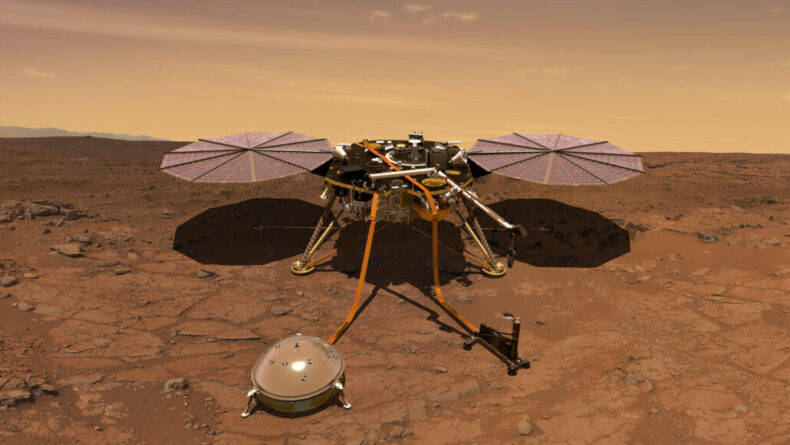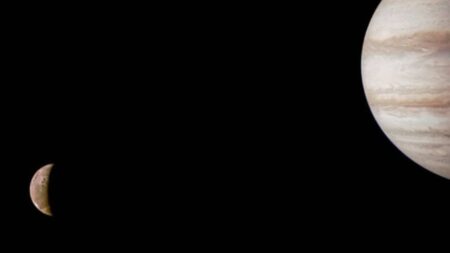On May 4, a tremor with a magnitude of 5 was detected on the surface of Mars. This earthquake was the biggest one ever recorded not just on Mars but on any planet other than Earth.
The marsquake, which was detected by NASA’s InSight lander, broke the previous record, which was held by a quake with a magnitude of 4.2 that occurred in August of 2021.
The NASA InSight team and its collaborators have just received preliminary data from Mars on what is thought to be the most seismic activity that has ever been recorded on another planet. Thomas Zurbuchen, NASA‘s Associate Administrator for Science, made this statement on Twitter. “Preliminary estimate: Magnitude 5 event. It is essential to have patience as the teams examine the data.”
In the grand scheme of things, an earthquake of magnitude 5 would be inconsequential. On our globe, earthquakes of this kind occur half a million times each year, yet they only sometimes result in significant property damage.
However, Mars is a tectonically very calm place, and a magnitude 5 earthquake is about as strong as scientists had anticipated when they deployed InSight to the Red Planet in 2018.

Since we placed our seismometer in its current location in December of 2018, we have been patiently awaiting “the big one.” In a statement, NASA’s Jet Propulsion Laboratory in California, which is in charge of leading the expedition, quoted Bruce Banerdt, who is the principal investigator for the InSight program. It is certain that this earthquake will give a perspective inside the globe that is unparalleled to any other.
The crew has a limited understanding of the record-breaking marsquake and will need to do an analysis of the data in order to identify the location and cause of the event.
On November 26, 2018, the InSight lander successfully touched down in the Elysium Planitia region of Mars. This is a vast plain that runs down the equator of the planet and is equipped with a seismometer that was developed by the French space agency CNES. By detecting and analyzing seismic waves as they travel through the various geological layers of Mars, the equipment gives scientists the ability to take a sneak look at the innards of the planet from a faraway location. The geologists are able to estimate the depth and composition of these layers by comparing what they observe on the Red Planet with what they know about the behavior of seismic waves on Earth. These layers are known as the crust, the mantle, and the core, respectively.
InSight has been on Mars for close to 1,300 Earth days, during which time it has observed more than 1,313 quakes. The main mission of the lander was declared completed in the year 2020, however NASA has extended the mission after then.
However, the lander is having difficulty collecting sufficient solar power to maintain operations. Since the landing of InSight, there has been a discernible rise in the quantity of dust in the atmosphere, which may be attributed to the cyclical nature of Mars’ weather.
During the month of January, a local dust storm caused the spacecraft to enter safe mode, which raised questions about how much further the mission could be sustained. The spacecraft once again encountered dangerously low levels of power on May 7, only a few days after it made its fresh discovery of a strong source.













